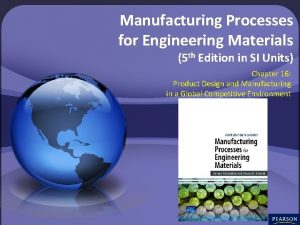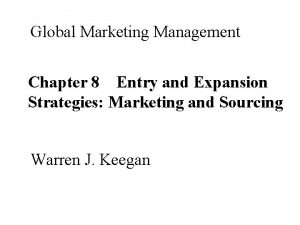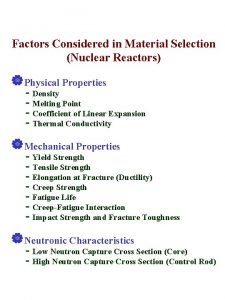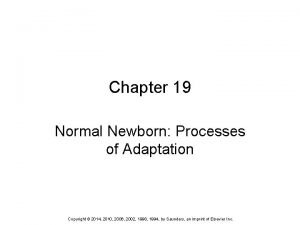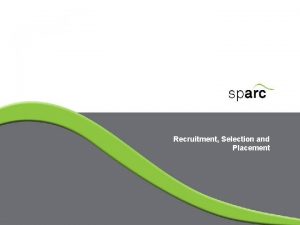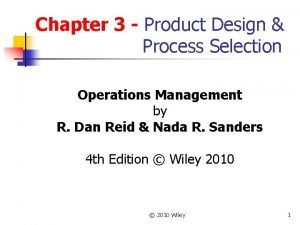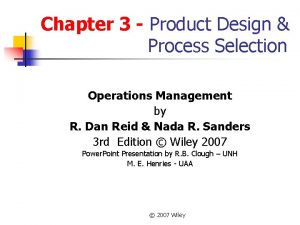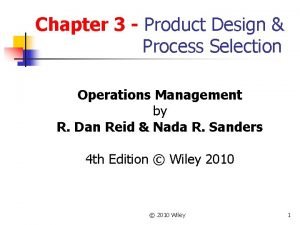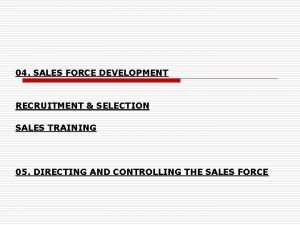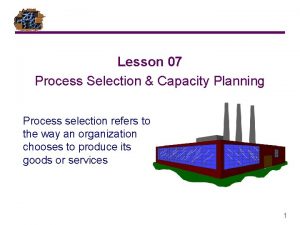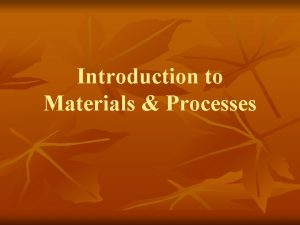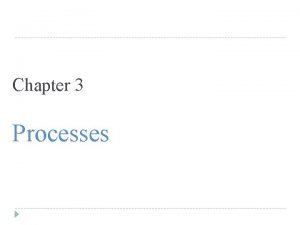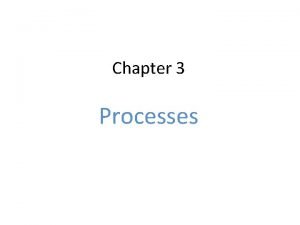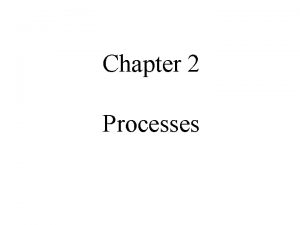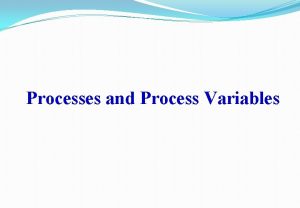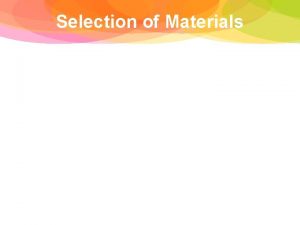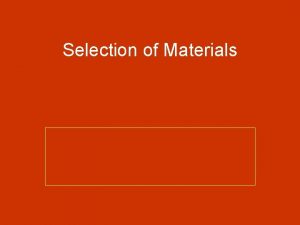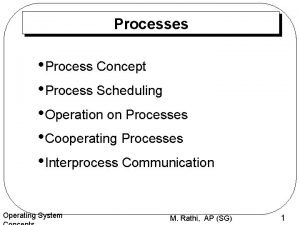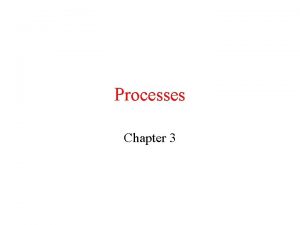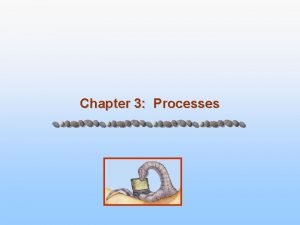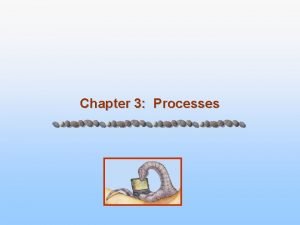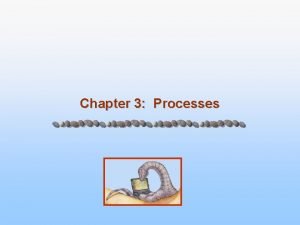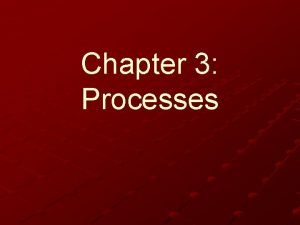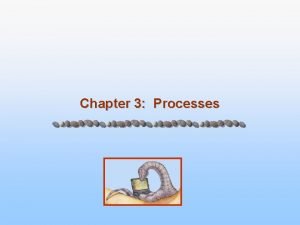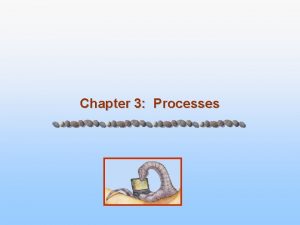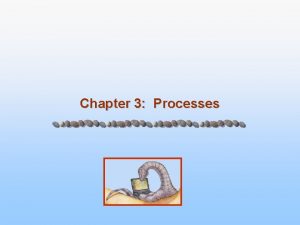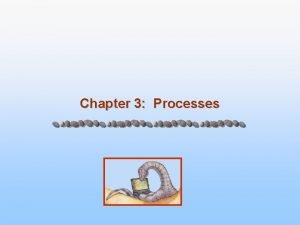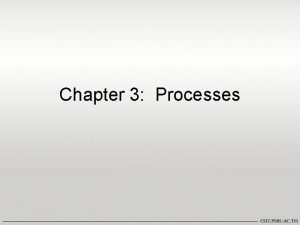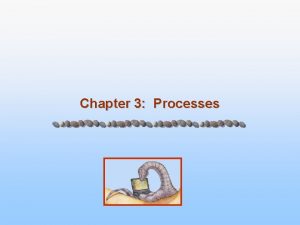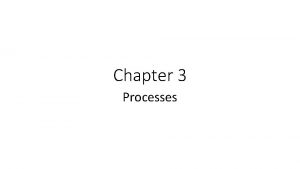Chapter 13 Processes and Process Selection Materials Selection







































- Slides: 39

Chapter 13 Processes and Process Selection Materials Selection in Mechanical Design, 4 th Edition, © 2010 Michael Ashby

A process is a method of shaping, joining, or finishing a material. The choice, for a given component, depends on the material of which it is to be made; on its size, shape, and required precision; and on how many are to be made. Figure 13. 1 Materials Selection in Mechanical Design, 4 th Edition, © 2010 Michael Ashby

To select processes we must first classify them. Figure 13. 2 shows the various classes of processes. Figure 13. 2 Materials Selection in Mechanical Design, 4 th Edition, © 2010 Michael Ashby

Figure 13. 3 Materials Selection in Mechanical Design, 4 th Edition, © 2010 Michael Ashby

Figure 13. 4 Materials Selection in Mechanical Design, 4 th Edition, © 2010 Michael Ashby

Casting Processes In sand casting, liquid metal is poured into a split sand mold. In die casting, liquid is forced under pressure into a metal mold. In investment casting, a wax pattern is embedded in a refractory, melted out, and the cavity filled with metal. In pressure casting, a die is filled from below, giving control of the atmosphere and of the flow of metal into the die. Figure 13. 5 Materials Selection in Mechanical Design, 4 th Edition, © 2010 Michael Ashby

Molding Processes In injection molding, a granular polymer is heated, compressed, and sheared by a screw feeder forcing it into the mold cavity. In blow molding, a tubular blank of hot polymer or glass is expanded by gas pressure against the inner wall of a split die. In polymer extrusion, shaped sections are formed by extrusion through a shaped die. In thermo-forming, a sheet of thermoplastic is heated and deformed into a female die by vacuum or gas pressure. Figure 13. 6 Materials Selection in Mechanical Design, 4 th Edition, © 2010 Michael Ashby

Deformation Processes In forging, a slug of metal is shaped between two dies held in the jaws of a press. In rolling, a billet or bar is reduced in section by compressive deformation between the rolls. In extrusion, metal is forced to flow through a die aperture to give a continuous prismatic shape. In spinning, a spinning disc of ductile metal is shaped over a wooden pattern by repeated sweeps of the smooth, rounded tool. Figure 13. 7 Materials Selection in Mechanical Design, 4 th Edition, © 2010 Michael Ashby

Powder Processing In die-pressing and sintering the powder is compacted in a die, often with a binder, and the green compact is then fired to give a more or less dense product. In hot isostatic pressing, powder in a thin, shaped shell or preform is heated and compressed by external gas pressure. In powder injection molding, powder and binder are forced into a die to give a green blank that is then fired. In slip casting, a water-based powder slurry is poured into a porous plaster mold that absorbs water, leaving a powder shell that is subsequently fired. Figure 13. 8 Materials Selection in Mechanical Design, 4 th Edition, © 2010 Michael Ashby

Composite Forming Methods In filament winding, fibers of glass, Kevlar, or carbon are wound onto a former and impregnated with a resin-hardener mix. In roll and spray lay-up, fiber reinforcement is laid up in a mold onto which the resin-hardener mix is rolled or sprayed. In vacuum-bag and pressure-bag molding, laid-up fiber reinforcement, impregnated with resin hardener mix, is compressed and heated to cause polymerization. In pultrusion, fibers are fed through a resin bath into a heated die to form continuous prismatic sections. Figure 13. 9 Materials Selection in Mechanical Design, 4 th Edition, © 2010 Michael Ashby

Rapid Prototyping Figure 13. 10 In deposition modeling and ballistic particle manufacture, a solid body is created by the layer-by-layer deposition of polymer droplets. In stereolithography, a solid shape is created layer by laserinduced polymerization of a resin. In direct mold modeling, a sand mold is built up layer by selective spraying of a binder from a scanning printhead. In laminated object manufacture, a solid body is created from layers of paper, cut by a scanning laser beam and bonded with a heatsensitive polymer. Materials Selection in Mechanical Design, 4 th Edition, © 2010 Michael Ashby

Machining Operations Figure 13. 11 In turning and milling, the sharp, hardened tip of a tool cuts a chip from the work piece surface. In drawing, blanking, and stretching, sheet is shaped and cut to give flat and dished shapes. In electro-discharge machining, electric discharge between a graphite electrode and the work piece, submerged in a dielectric such as paraffin, erodes the work piece to the desired shape. In water-jet cutting, an abrasive entrained in a high-speed water jet erodes the material in its path. Materials Selection in Mechanical Design, 4 th Edition, © 2010 Michael Ashby

Joining Operations In adhesive bonding, a film of adhesive is applied to one surface, which is then pressed onto the mating one. Fastening is achieved by bolting; riveting; stapling; pushthrough snap fastener; push-on snap fastener; or rod-to-sheet snap fastener. In metal fusion welding, metal is melted, and more is added from a filler rod to give a bond or coating. In thermoplastic polymer welding, heat is applied to the polymer components, which are simultaneously pressed together to form a bond. Figure 13. 12 Materials Selection in Mechanical Design, 4 th Edition, © 2010 Michael Ashby

Finishing Processes Figure 13. 13 In mechanical polishing, the roughness of a surface is reduced and its precision increased, by material removal using finely ground abrasives. In electroplating, metal is plated onto a conducting work piece by electro-deposition in a plating bath. In heat treatment, a surface layer of the work piece is hardened and made more corrosion resistant by the inward diffusion of carbon, nitrogen, phosphorous, or aluminum from a powder bed or molten bath. In anodizing, a surface oxide layer is built up on the work piece by a potential gradient in an oxidizing bath. Materials Selection in Mechanical Design, 4 th Edition, © 2010 Michael Ashby

Finishing Processes Figure 13. 14 In paint spraying, a pigment in an organic- or water-based solvent is sprayed onto the surface to be decorated. In polymer powder-coating a layer of thermoplastic is deposited on the surface by direct spraying in a gas flame, or by immersing the hot work piece in a bed of powder. In silk-screen printing, ink is wiped onto the surface through a screen onto which a blocking pattern has been deposited, allowing ink to pass in selected areas only. In padprinting, an inked pattern is picked up on a rubber pad and applied to the surface, which can be curved or irregular. Materials Selection in Mechanical Design, 4 th Edition, © 2010 Michael Ashby

Figure 13. 15 The extent of the material bubbles on the property charts gives an idea of the degree to which properties can be manipulated by processing. Materials Selection in Mechanical Design, 4 th Edition, © 2010 Michael Ashby

Figure 13. 16 Here, the effects of fillers, impact modifiers, and fibers on the strength and toughness of polypropylene is shown. Materials Selection in Mechanical Design, 4 th Edition, © 2010 Michael Ashby

Specific metals are not susceptible to all strengthening mechanisms. Materials Selection in Mechanical Design, 4 th Edition, © 2010 Michael Ashby

Strengthening mechanisms and the consequent drop in ductility, here shown for copper alloys. The mechanisms are frequently combined. The greater the strength, the lower the ductility. Figure 13. 17 Materials Selection in Mechanical Design, 4 th Edition, © 2010 Michael Ashby

Thermal conductivity and strength for aluminum alloys. Figure 13. 18 The best choice of material for a cable is one with high strength and low resistivity, but strengthening mechanisms increase resistivity. Figure 13. 19 Materials Selection in Mechanical Design, 4 th Edition, © 2010 Michael Ashby

Figure 13. 20 The changes in fracture toughness and yield strength for a plain carbon steel on heat treatment. Materials Selection in Mechanical Design, 4 th Edition, © 2010 Michael Ashby

Strategy for Process Selection Flow chart for process selection parallels that for material selection. Figure 13. 21 Materials Selection in Mechanical Design, 4 th Edition, © 2010 Michael Ashby

Process-Material Compatibility Matrix Figure 13. 22 Materials Selection in Mechanical Design, 4 th Edition, © 2010 Michael Ashby

Process-Shape Compatibility Matrix Figure 13. 23 Materials Selection in Mechanical Design, 4 th Edition, © 2010 Michael Ashby

Limits on Mass There are limits to the size of component that a process can make. Limits can be on mass or thickness. Figure 13. 24 Materials Selection in Mechanical Design, 4 th Edition, © 2010 Michael Ashby

Process Limits for Section Thickness Figure 13. 25 Materials Selection in Mechanical Design, 4 th Edition, © 2010 Michael Ashby

Flow of liquid metal or polymer into thin sections is opposed by surface tension as at (a) and by viscous forces (b). Loss of heat into the mold increases viscosity and may cause premature solidification. Figure 13. 26 Materials Selection in Mechanical Design, 4 th Edition, © 2010 Michael Ashby

The influence of friction and aspect ratio on forging: (a) uniaxial compression with very low friction; (b) with sticking friction the contact pressure rises in a friction hill; (c) the greater the aspect ratio, the greater the pressure rise, ultimately limiting the thinness that can be achieved Figure 13. 27 Materials Selection in Mechanical Design, 4 th Edition, © 2010 Michael Ashby

The height-to-width aspect ratio in powder forging is limited by diewall friction, which causes the compaction pressure to fall exponentially with distance from the surface. Figure 13. 28 Materials Selection in Mechanical Design, 4 th Edition, © 2010 Michael Ashby

Roughness Figure 13. 29 A section through a surface showing its irregular surface. The irregularity is measured by the RMS roughness. Materials Selection in Mechanical Design, 4 th Edition, © 2010 Michael Ashby

Process-Tolerance Chart Tolerance and roughness characterize the precision and surface finish of a component. These are aspects its quality. Figure 13. 30 Materials Selection in Mechanical Design, 4 th Edition, © 2010 Michael Ashby

Process-Roughness Chart Figure 13. 31 Materials Selection in Mechanical Design, 4 th Edition, © 2010 Michael Ashby

Joining: Material Compatibility Figure 13. 32 Processes for joining metals, polymers, ceramics, and glasses differ. A given adhesive will bond to some materials but not to others. The geometry of the joint and the way it is loaded influence process choice. Materials Selection in Mechanical Design, 4 th Edition, © 2010 Michael Ashby

Materials Selection in Mechanical Design, 4 th Edition, © 2010 Michael Ashby

Cost Modeling Materials Selection in Mechanical Design, 4 th Edition, © 2010 Michael Ashby

Figure 13. 33 Cost of sharpening a pencil plotted against batch size for four process. The curves all have the form of: Materials Selection in Mechanical Design, 4 th Edition, © 2010 Michael Ashby

Economic Batch Size The range of produced units for a process to be competitive in terms of cost Figure 13. 34 Materials Selection in Mechanical Design, 4 th Edition, © 2010 Michael Ashby

Inputs to a Cost Model Figure 13. 35 Materials Selection in Mechanical Design, 4 th Edition, © 2010 Michael Ashby

Materials Selection in Mechanical Design, 4 th Edition, © 2010 Michael Ashby
 Concurrent in os
Concurrent in os Manufacturing process for engineering materials
Manufacturing process for engineering materials Favourite cars
Favourite cars Harmful and useful
Harmful and useful Natural man made
Natural man made Adopting materials
Adopting materials How do geological processes affect natural selection
How do geological processes affect natural selection Layout
Layout Product vs process layout
Product vs process layout Direct materials budget with multiple materials
Direct materials budget with multiple materials Chapter 8 the international market selection process
Chapter 8 the international market selection process Two way selection and multiway selection
Two way selection and multiway selection Multiway selection
Multiway selection Mass selection
Mass selection What processes are crucial to the ipde process
What processes are crucial to the ipde process Types of jaycustomers
Types of jaycustomers Factors considered for selection of materials
Factors considered for selection of materials Balancing selection vs stabilizing selection
Balancing selection vs stabilizing selection Artificial selection vs natural selection
Artificial selection vs natural selection K selection r selection
K selection r selection Natural selection vs artificial selection
Natural selection vs artificial selection Difference between continuous and discontinuous variation
Difference between continuous and discontinuous variation Example of stabilizing selection
Example of stabilizing selection Logistic model of population growth
Logistic model of population growth Natural selection vs artificial selection
Natural selection vs artificial selection Chapter 19 normal newborn processes of adaptation
Chapter 19 normal newborn processes of adaptation Recruitment and selection course outline
Recruitment and selection course outline Importance of process selection and facility layout
Importance of process selection and facility layout Importance of process selection and facility layout
Importance of process selection and facility layout Process selection and capacity planning
Process selection and capacity planning Importance of process selection and facility layout
Importance of process selection and facility layout Process selection and facility layout
Process selection and facility layout Process design in operations management
Process design in operations management Process selection in operations management
Process selection in operations management Product design and process selection
Product design and process selection Product design and process selection
Product design and process selection Recruitment and selection of sales force ppt
Recruitment and selection of sales force ppt Bsbhrm506 assessment answers
Bsbhrm506 assessment answers Process selection and capacity planning
Process selection and capacity planning Potential development projects can be identified by
Potential development projects can be identified by

